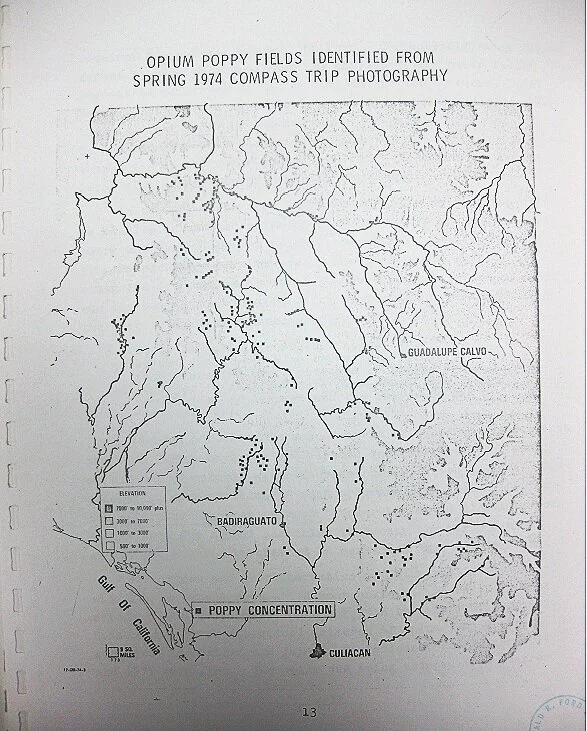Mexico’s drug trade has always had a distinct - if shifting - geography. Here are some maps that capture the trade’s changing growing zones and trafficking routes.
Maps by Noemi Morales Sánchez.
Between 1900 and 1940 most narcotics were imported into Mexico through the port of Veracruz. They were taken by train to Mexico City, Torreón and then to the U.S. border at Ciudad Juárez. However by the 1930s some Chinese and Mexican farmers were growing small opium poppy plantations in the state of Sonora.
From the 1940s onwards, the Golden Triangle - a mountainous zone encompassing parts of Sinaloa, Durango, and Chihuahua - became Mexico’s foremost opium growing zone. Much of the opium was taken north by train or road.
The 1960s counterculture expanded opium and marijuana production throughout Mexico. The vast majority was trafficked north on multiple routes.
In 1974 the U.S. government used multi-spectral photography to identify opium poppy fields in Mexico. The fields were distributed throughout the Golden Triangle in remarkably similar places to where they were located thirty years earlier.
This 1975 opium poppy survey, also performed by the United States, shows a similar distribution throughout the Golden Triangle.
In 1979 a DEA agent (probably Phil Jordan) - frustrated with the slowing down of Mexican counternarcotics efforts - leaked this breakdown of Mexican drugs traffickers to the Arizona Republic. It was the first public mention of Miguel Angel Félix Gallardo, future head of the so-called Guadalajara cartel.
Map of Mexican drug traffickers c. 1986
The DEA called Mexico’s 1980s drug traffickers "the Guadalajara cartel". But as this map of major traffickers demonstrates, this shorthand failed to capture the multiplicity of independent, geographically dispersed smugglers. Photograph of a DEA operations map taken by Nathaniel Morris.
The “Guadalajara cartel” of the 1980s trafficked cocaine and heroin. But it still specialized in high-quality sinsemilla marijuana which was grown principally in non-traditional growing zones of Zacatecas, Chihuahua, Sonora, and Oaxaca.







